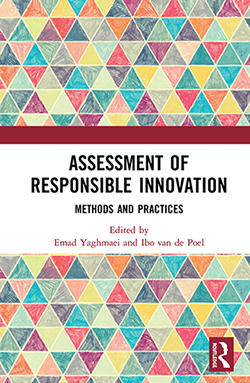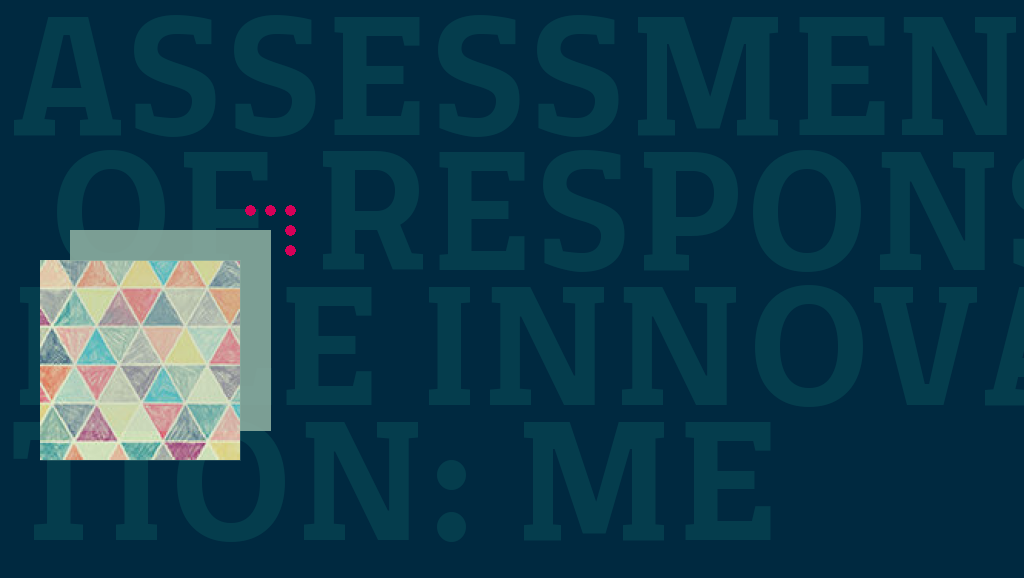Assessment of Responsible Innovation: Methods and Practices. Edited by Emad Yaghmaei and Ibo van de Poel, Routledge (2021), Open Access.
Over recent years, the EU has funded a long series of projects aimed at building tools and tool kits to help various sectors implement Responsible Innovation Approaches.
From the Preface we learn that this collection presents many of these tools, whose aims include measuring, monitoring and reporting upon the responsible innovation (RI) process and the social, environmental, scientific and economic impacts of innovations, while aligning these assessment tools and practices with the United Nations sustainable development goals.
The book is divided into three parts.
Part 1. Reflections on Responsible Innovation.
Part 1 offers thoughts and perspectives, firstly from Robert Gianni (whom regular readers will already know from his chapter in the International Handbook on Responsible Innovation and then from Roger Strand (a well-known author in the field of RI, circular and growth-free economy, also with a chapter in the Handbook) writing with Jack Spaapen.
As with the majority of the collection, these reflections are based on personal experience. Gianni offers a historically grounded overview of different approaches and views of responsibility and democracy (and their relationship with scientific processes), through an analysis of typical RI and RRI features and approaches.
Strand and Spaapen offer reflections based upon their experience of working within the EC Expert Group on Policy Indicators for Responsible Research and Innovation (RRI), including an overview of a ‘suite of indicators for a network approach’ and some interesting examples of approaches taken across the world.
Part 2. RRI in Companies.
Part 2 offers 4 chapters that once again bring in some familiar names (Vincent Blok, Elvio Mantovani, Elisabetta Borsella and Andrea Porcari to name a few).
These chapters raise lots of interesting questions and issues, including regarding the relationship between RRI and CSR, obstacles and drivers for RRI implementation, costs and benefits from following and RRI approach and possible roles for voluntary standards. One major sector that is well addressed in that of food, with two of the chapters (4 and 6) using examples and case studies drawn from the European food sector.
Part 3. Responsible Innovation Assessment.
This third and final part of the book really answers the call of its title, presenting a compendium of different approaches, methods and metrics for assessing responsible innovation practices spread across 8 chapters and once again featuring some well-known names (not least Bernd Carsten Stahl).
The chapters raise a host of questions regarding which indicators and metrics might be useful if trying to measure effectiveness of RI and RRI processes, which types of assessment could be carried out, opportunities and challenges faced, the volume and depth possible for integrating practices, as well as discussion of pitfalls, all set alongside a series of proposals and a host of suggestions for methodologies that could be followed.
Several of the EU projects I spoke about earlier are mentioned, with their tool-sets and approaches explained and analyzed in easy-to-understand terms, with a recurring theme of continuous systematic and looped learning permeating the approaches. There are some interesting points of focus too, from ICT and digital transformation to employee creativity and reflexive skills.
This part is also a font of best practices, with a host of suggestions emanating from various chapters.
The Collection
This collection brings together a broad spectrum of approaches that would otherwise find themselves scattered across project websites, within end of project publication deliverables and articles published in many fields, offering the reader an overview of what could be seen as divergent practices that have grown out of different interests and focusses.
I have sometimes been critical of the project-driven approach to promoting the concept of RI precisely because it leads to the creation of tools and approaches that remain separated (in time, space and field) are abandoned when funding finishes, making it difficult to see a coherent strategy that would be even more difficult to follow.
The editors have set out to bring these developments together, and have succeeded in doing so in a very readable and interesting way.
The book is a kind of tool kit of tool-kits, approaches, and most importantly practices. It is almost a handbook in the traditional form, offering examples (from experience) of practical approaches tested in real world situations.
A fine companion for a forthcoming wave of Responsible Innovation Business Consultants. Download it here.

————————-
















